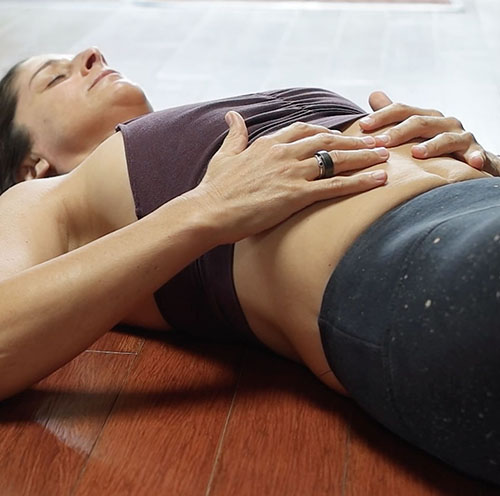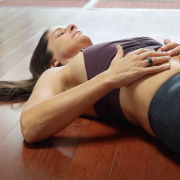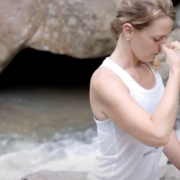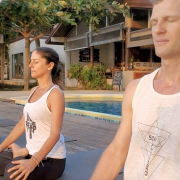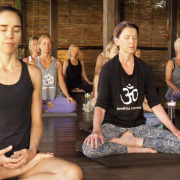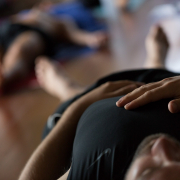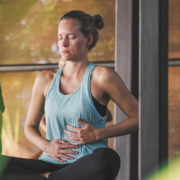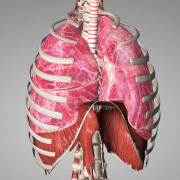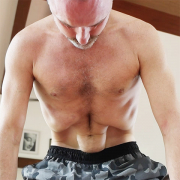 https://samahitaretreat.com/wp-content/uploads/2020/09/paul-nauli-training.jpg
480
480
Dr. Paul Dallaghan
http://samahitaretreat.com/wp-content/uploads/2024/01/samahita-logo-v2.svg
Dr. Paul Dallaghan2020-09-08 06:42:562023-11-02 04:46:421 Minute Yoga – Nauli Training
https://samahitaretreat.com/wp-content/uploads/2020/09/paul-nauli-training.jpg
480
480
Dr. Paul Dallaghan
http://samahitaretreat.com/wp-content/uploads/2024/01/samahita-logo-v2.svg
Dr. Paul Dallaghan2020-09-08 06:42:562023-11-02 04:46:421 Minute Yoga – Nauli TrainingBreathwork in response to an ongoing anxious state of being
You can address both an anxiety attack and the ongoing burden of anxiety through breathwork. You can do this as its own technique or in combination with other therapies or medication you are being supervised in. It is not meant to replace other treatment. If you are on medication or in other support therapy treatment it is wiser to continue with that and build up the breathwork practice gradually. It is not recommended to drop prescribed medication or other treatments in the hope that breathwork will fix it. Any benefit from these practices come from a regular practice over the long term.
Breathwork in response to an ongoing anxious state of being:
- Relax – Lay on your back or belly and allow smooth breathing and your body to release
- Sit – get into a comfortable seated posture where the heart is lifted, free and open
Start – by just observing the flow of your breath as it is right now - Continue – engage with the breath so it becomes a measured 1-1, this means same length inhale as exhale. The length will vary per person. Better to start at a shorter count (in seconds) as it will be easier to stay in it and let it grow. Do at least 10 rounds like this.
- Extend the exhale – After the 10 rounds of 1-1 notice how your heart area feels, any tightness in the chest area? To reduce that pressure and enhance feeling better extend the exhale so it becomes a measured 1-2 breath. This means the exhale now grows to double the length of the inhale. The exhale done in a relaxed state like this has strong nerve calming effects. The more regular you do this then your system adapts to the signal of a calm dominance and can autonomically shift from inner stress responses to a supportive physiological state. 10 rounds.
- Humm – (aka Bee Breath) continue the exact same breathwork mode but change the exhale to a nasal humm. This means a sound will arise on the exhale similar to “ngggmmmm”. The sound vibration should ideally be localized at the back of the naso-pharyngeal space, around and beyond the soft palate.
- Lay down and relax – either on your belly or back and be with the remaining breath
This routine is targeted at managing an ongoing anxiety state. To use breathwork to manage an acute anxiety attack see this practice (A). To learn a 10-minute breathwork routine for stress see the Quad-Ratio Breath post. To grow your breathwork practice into a regular routine for stress and anxiety see this practice (C). To learn more on the background and how these routines are integrated within a more comprehensive approach to stress and anxiety see these two articles.
Dr. Paul Dallaghan’s expertise with breathwork, body and meditative practices comes from three sources: (1) three decades of daily dedicated practice and teaching these techniques; (2) uniquely acknowledged in the Yoga tradition by the title of “Master Yogi-Prānācharya (expert in breath)”, following an immersion in the original culture through one-on-one direct training in practice and study of ancient texts; (3) a PhD in doctoral scientific research at a leading US university (Emory) covering both the tradition and science of yoga and breath practices in terms of stress, health and aging. As a result, Paul occupies a unique space to impart genuine teaching and science on the breath, body, and meditative practices, seen as a Teacher-of-teachers and identified to carry on the tradition of Pranayama. His sincere and ongoing role is to teach, write and research, to help put out experienced and authentic information on these areas of how we live, breathe and be, to help people improve their mental and physical health, and live more fulfilling lives.
For more on his background see his bio
More from the Samahita Blog
